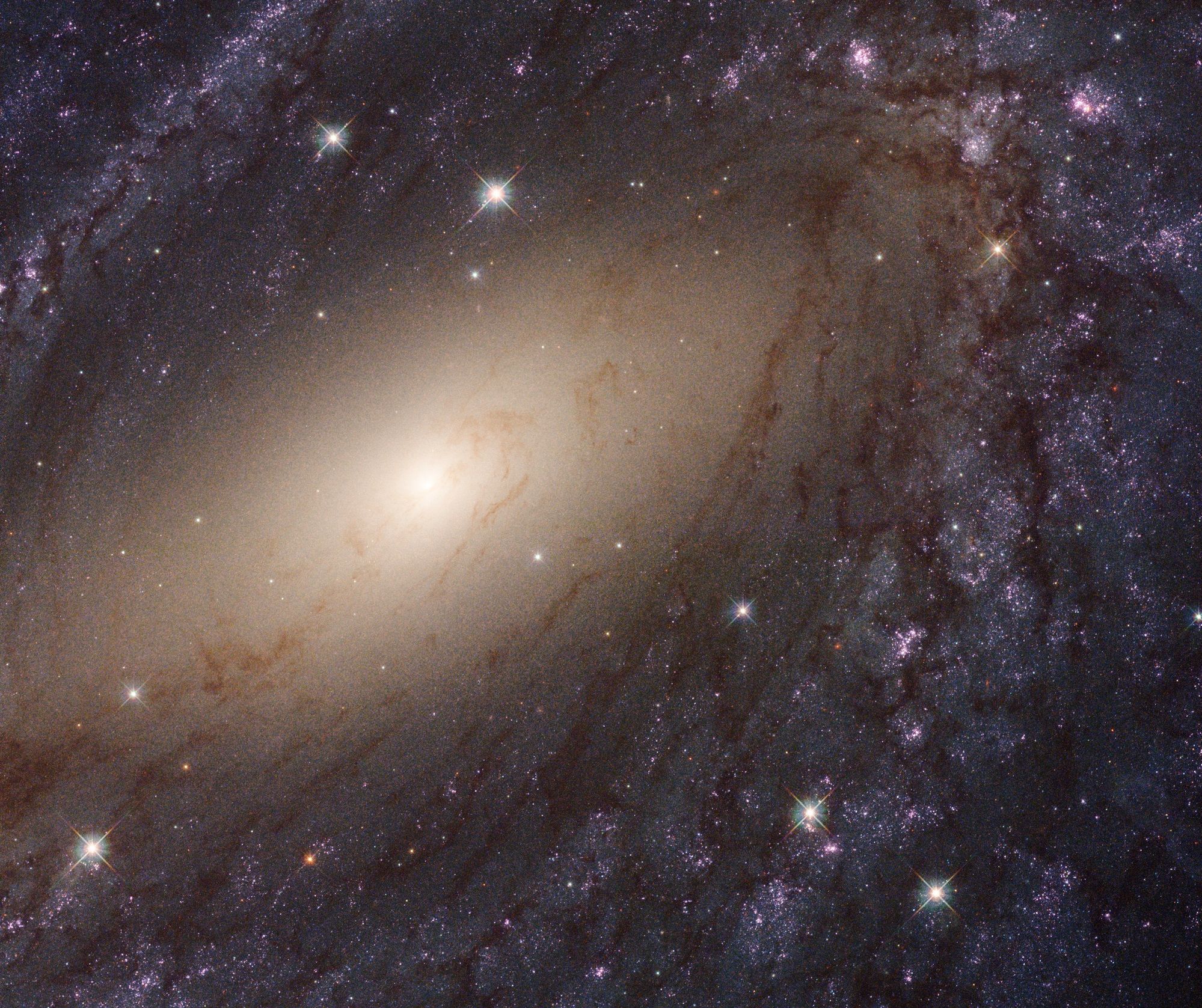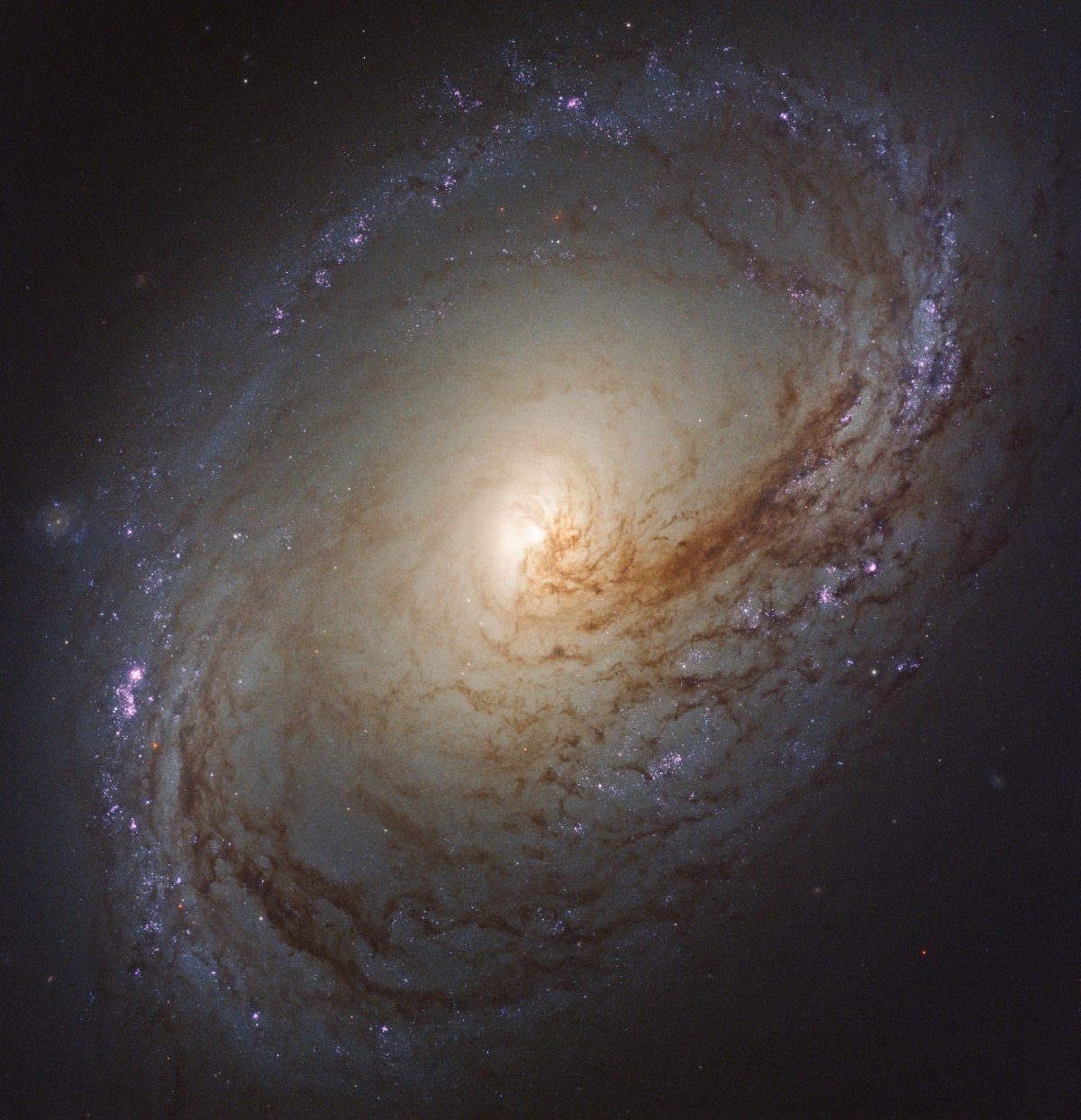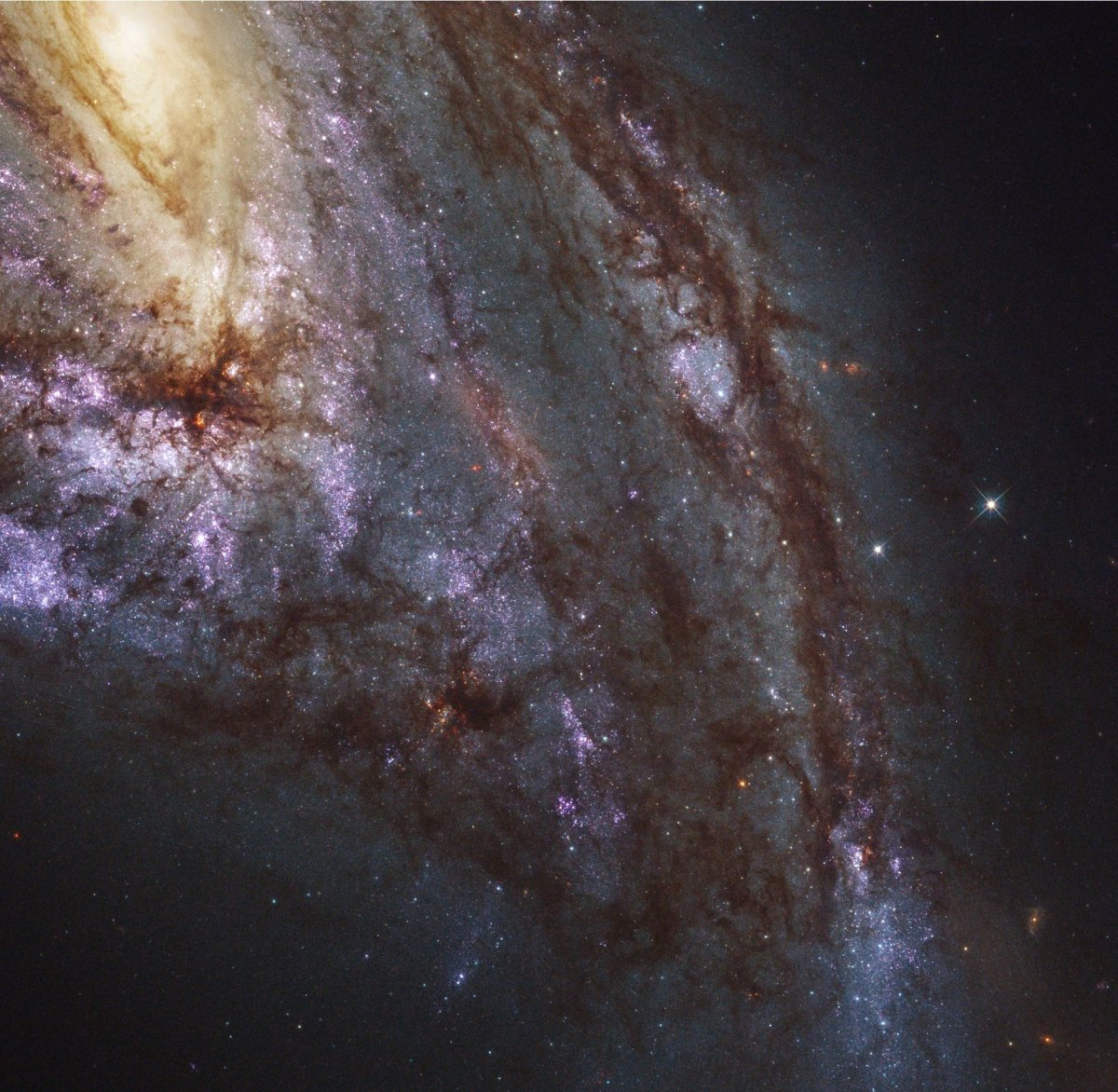
Astronomers have released images from the most comprehensive ultraviolet light survey of nearby star-forming galaxies to date.
For the project, known as LEGUS (Legacy ExtraGalactic UV Survey), the researchers used the Wide Field Camera 3 and the Advanced Camera on board the Hubble Space Telescope to capture ultraviolet and visible pictures of 50 neighboring galaxies—which all lie within a 60 million-light-year radius of Earth—over the course of a year.
In the process, the astronomers captured images of around 8,000 young star clusters—groups of stars which are gravitationally bound—and catalogued 39 million individual stars, ranging from one to several billion years old.
The scientists hope data collected by the survey will provide new insights into the complexities of star formation and galaxy evolution.
"There has never before been a star cluster [catalog] and a stellar catalog that included observations in ultraviolet light," Daniela Calzetti, an astronomer from the University of Massachusetts Amherst, who led the LEGUS survey, said in a statement.
"Ultraviolet light is a major tracer of the youngest and hottest star populations, which astronomers need to derive the ages of stars and get a complete stellar history. The synergy of the two catalogs combined offers an unprecedented potential for understanding star formation," she said.

Even today, with access to unprecedented astronomical data, astronomers still do not understand many aspects of how stars form. But the new findings may help to change that because the data will be made available to researchers who want to investigate how star formation occurred in one specific galaxy or set of galaxies.
One of the main issues that the survey may help to address is the connection between star formation and the major structures that make up a galaxy, such as spiral arms.

"When we look at a spiral galaxy, we usually don't just see a random distribution of stars," Calzetti said. "It's a very orderly structure, whether it's spiral arms or rings, and that's particularly true with the youngest stellar populations. By seeing galaxies in very fine detail—the star clusters—while also showing the connection to the larger structures, we are trying to identify the physical parameters underlying this ordering of stellar populations within galaxies."
Uncommon Knowledge
Newsweek is committed to challenging conventional wisdom and finding connections in the search for common ground.
Newsweek is committed to challenging conventional wisdom and finding connections in the search for common ground.
About the writer
Aristos is a Newsweek science reporter with the London, U.K., bureau. He reports on science and health topics, including; animal, ... Read more
To read how Newsweek uses AI as a newsroom tool, Click here.








